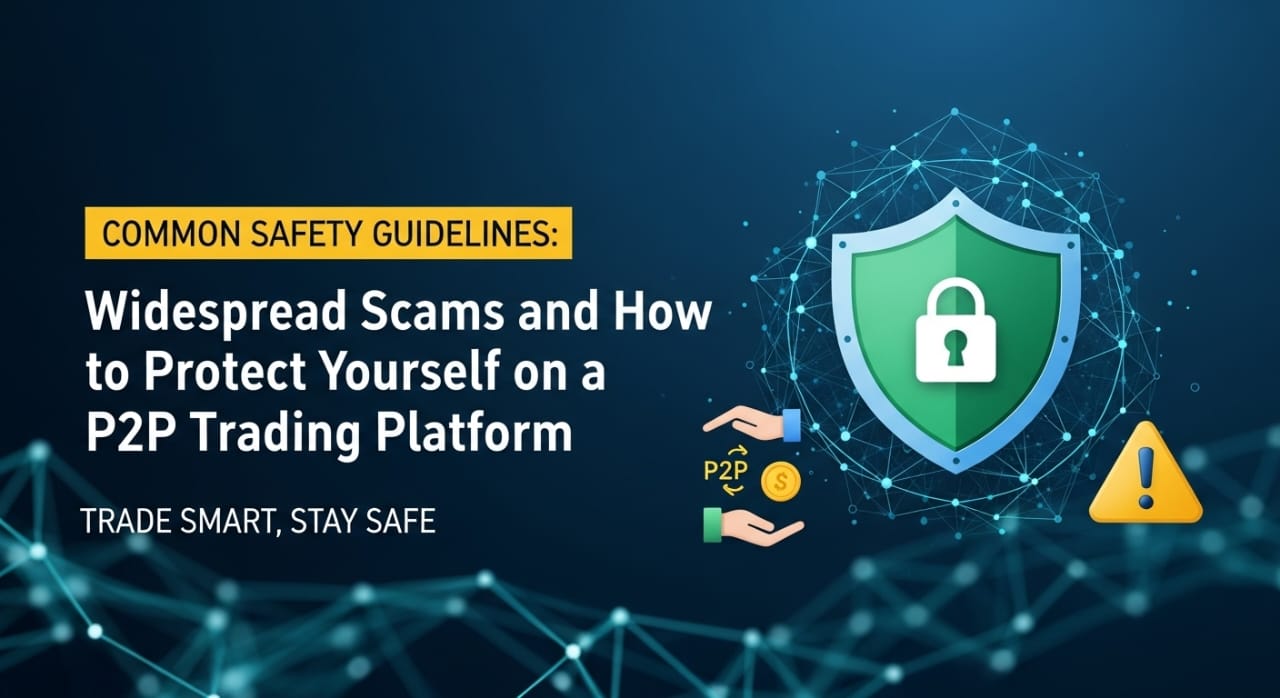The immensely fast and global rise of cryptocurrency has accelerated the popularity of the peer-to-peer trading format, providing users with the freedom of exchanging digital assets directly with each other without ever relying on third-party intermediaries. This decentralized approach towards trading offers more autonomy, greater flexibility, and full control over transactions. However, the features that make peer-to-peer trading appealing to traders of all levels also create certain opportunities for malicious schemes. Without strict oversight, operating on a P2P trading platform can make you a target for scams designed to exploit less cautious participants.
How does a P2P trading platform operate?
A modern P2P trading platform acts similarly to a digital marketplace, which connects buyers and sellers so they can negotiate terms of the trade according to mutually agreed-upon terms. These platforms generally do not set or otherwise dictate prices or payment methods; instead, they provide a technical environment where offers are listed, and deals are completed. To enhance transaction security, most reputable services employ an escrow system, temporarily holding funds until both sides fulfill their obligations. Choosing a reliable platform, such as Ellyx helps reduce the likelihood of encountering fraudulent activity and keeps your funds safe.
Main risks P2P traders may encounter
- Fake seller profiles
One of the most common scams is when fraudsters post listings with prices well below market value to attract attention and quick buyers. Once payment is processed, they disappear without delivering the crypto coins. In some cases, they even operate multiple fake accounts to post fabricated reviews, making their profiles look more legitimate and making people trust them more.
- Forged payment confirmations
Another common scheme involves sending out counterfeit transfer receipts, claiming funds are delayed or pending. With sophisticated editing tools, these fake documents can closely resemble authentic banking notifications, making them quite hard to identify.
- Chargeback manipulation
In this scam, the buyer pays for the digital assets and receives them. However, he later reverses the transaction via the chargeback function offered by certain banking institutions or payment services, leaving the seller with no crypto and no funds.
- Phishing and data theft
Cybercriminals often create fake websites that look identical to a trusted P2P trading platform to trick less experienced users into entering their login credentials. Clicking on malicious links or sharing sensitive data outside the official platform can give scammers full access to accounts and funds.
Best practices for safe trading on any P2P trading platform
- Always check counterparties’ reputations: Carefully review trade history, user ratings, and feedback before accepting an offer.
- Be skeptical of unrealistically low prices: If a deal looks appealing and too good to be true, it usually is.
- Only use verified payment methods: Make sure to stick to payment systems that offer reliable buyer and seller protection and confirm the terms before initiating the trade.
- Avoid off-platform transactions: Never complete a deal outside the P2P trading platform, as it removes all security safeguards, leaving you immensely vulnerable.
- Ignore unsolicited messages: Fraudsters may try to contact you on social media or messaging apps, claiming to represent the platform, so you must always be aware and avoid sharing personal data.
- Enable two-factor authentication: Adding an extra verification layer significantly reduces the risk of unauthorized account access and losing your funds.
While a P2P trading platform offers convenience and independence, it also requires traders to take an active role in managing their security. Staying alert, verifying counterparties and their ratings, and following safe payment practices can drastically reduce the risk of falling victim to fraud. In the fast-moving world of cryptocurrency, caution and preparation are essential for a secure and profitable trading experience.

